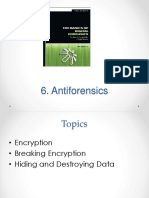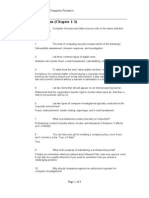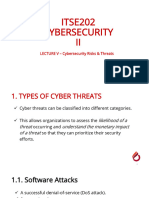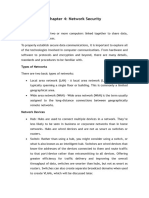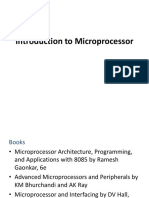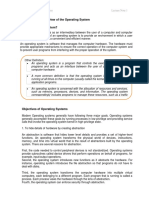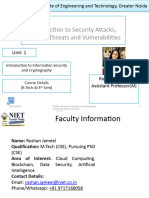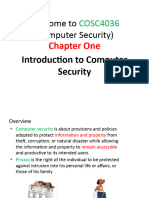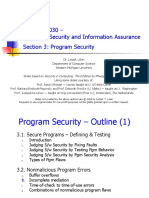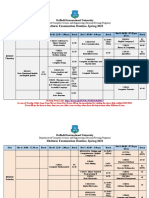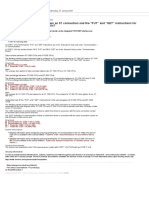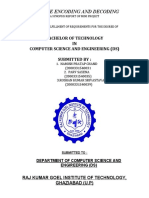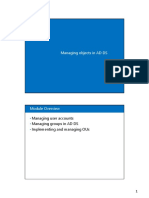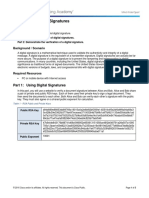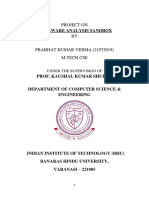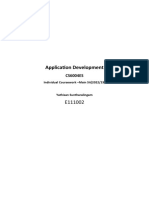0% found this document useful (0 votes)
263 views27 pagesChapter 5. Computer Security
This document discusses computer security. It defines computer security and explains that it aims to protect computer systems, data, networks and computing power from threats. It outlines common computer security goals of confidentiality, integrity and availability. It also describes common security threats like human intruders, malware, viruses, worms and Trojan horses. Finally, it discusses security solutions such as backups, cryptography, authentication, antivirus software and firewalls.
Uploaded by
Mintesnot TAMRATCopyright
© © All Rights Reserved
We take content rights seriously. If you suspect this is your content, claim it here.
Available Formats
Download as PDF, TXT or read online on Scribd
0% found this document useful (0 votes)
263 views27 pagesChapter 5. Computer Security
This document discusses computer security. It defines computer security and explains that it aims to protect computer systems, data, networks and computing power from threats. It outlines common computer security goals of confidentiality, integrity and availability. It also describes common security threats like human intruders, malware, viruses, worms and Trojan horses. Finally, it discusses security solutions such as backups, cryptography, authentication, antivirus software and firewalls.
Uploaded by
Mintesnot TAMRATCopyright
© © All Rights Reserved
We take content rights seriously. If you suspect this is your content, claim it here.
Available Formats
Download as PDF, TXT or read online on Scribd
/ 27

















